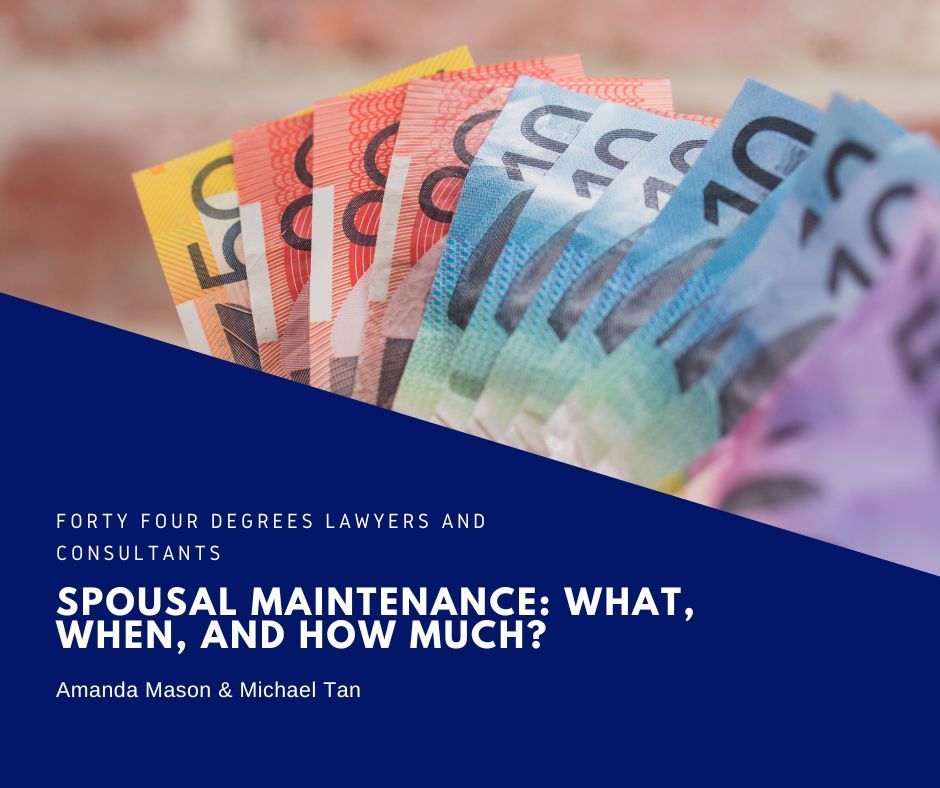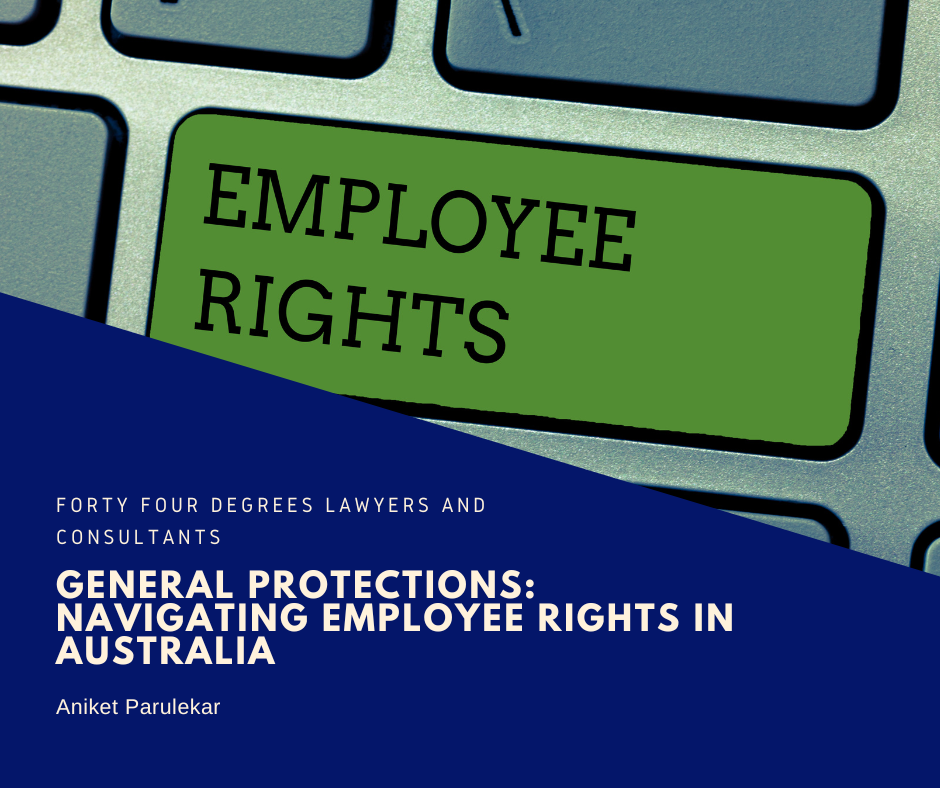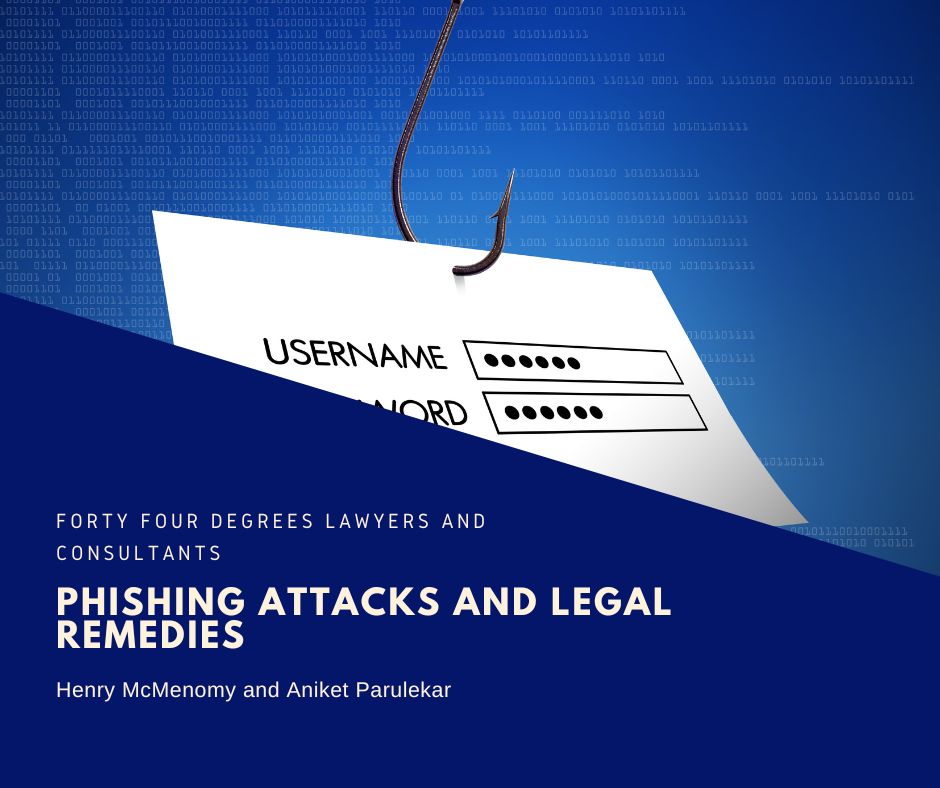Terminating a Rental Agreement
Terminating a Rental Agreement: Understanding changes to the Residential Tenancies Act
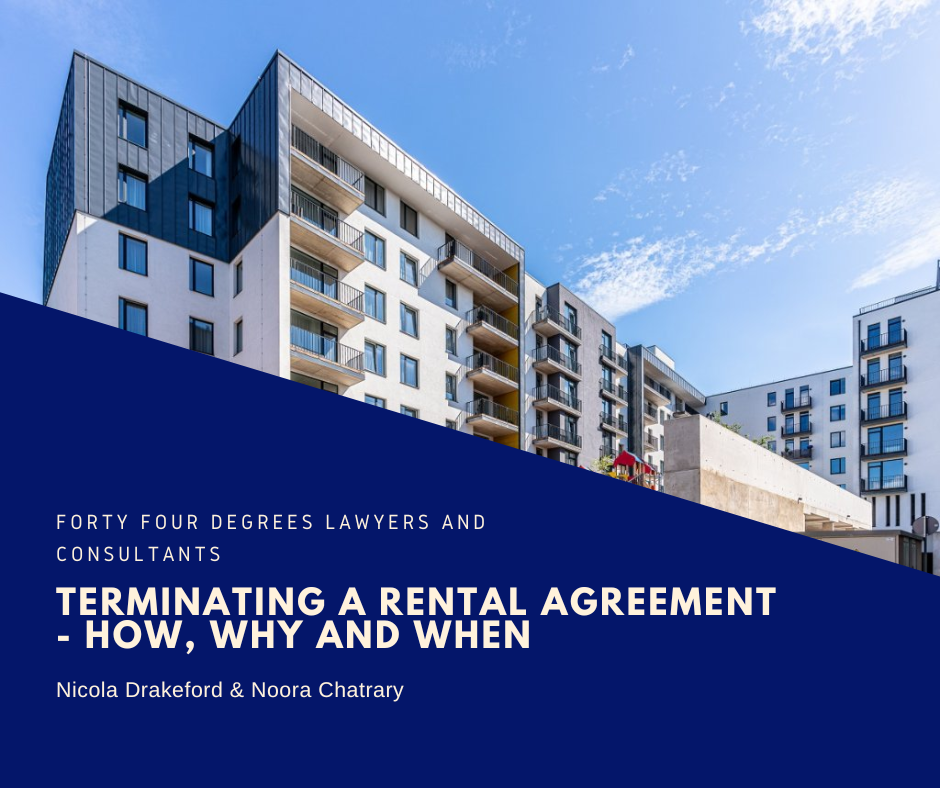
As either a renter or rental provider, it is important to be aware of your rights and obligations when it comes to evicting a residential renter (tenant) in Victoria. While this process can be complex and time-consuming, failure to follow the correct legal procedure can have serious consequences for rental providers.
The Residential Tenancies Amendment Act 2018 (amending the Residential Tenancies Act 1997) and Residential Tenancies Amendment Regulations 2021 implemented more than 130 reforms, designed to increase protections for renters while ensuring rental providers can still effectively manage their properties. Notably, under the new legislation, ‘landlords’ are now referred to as ‘rental providers’ and ‘tenants’ are now called ‘renters’.
It is worth nothing that while tenancy laws have been subject to numerous changes as a result of Covid19, the emergency Omnibus legislation and Omnibus regulations and transitional regulations are no longer in force.
Legal steps for eviction
To legally evict a renter, the rental provider must comply with the following process:
- Give the renter a valid notice to vacate.
- Apply to the Victorian Civil and Administrative Tribunal (VCAT) for a possession order.
- If VCAT made a possession order, purchase a warrant of possession from VCAT.
- Give the warrant of possession to the police, which the police will use to evict the renter.
Notice to Vacate
A rental provider who wishes for a renter to move out of the property can either talk to the renter to reach an agreement or give them a notice to vacate. A notice to vacate is a formal statement that the rental provider wants to end the rental agreement.
Since the commencement of the Amendment Act, there have been some significant changes to this process. Previously a rental provider could provide a ‘no specified reason’ notice to vacate, with 120 days of minimum notice required. However, now a notice to vacate can only be given for certain reasons.
Notice Before an Agreement Ends
A rental provider can only issue the renter with a notice to vacate before the end of the agreement for certain reasons. Those reasons and the applicable notice period are as follows:
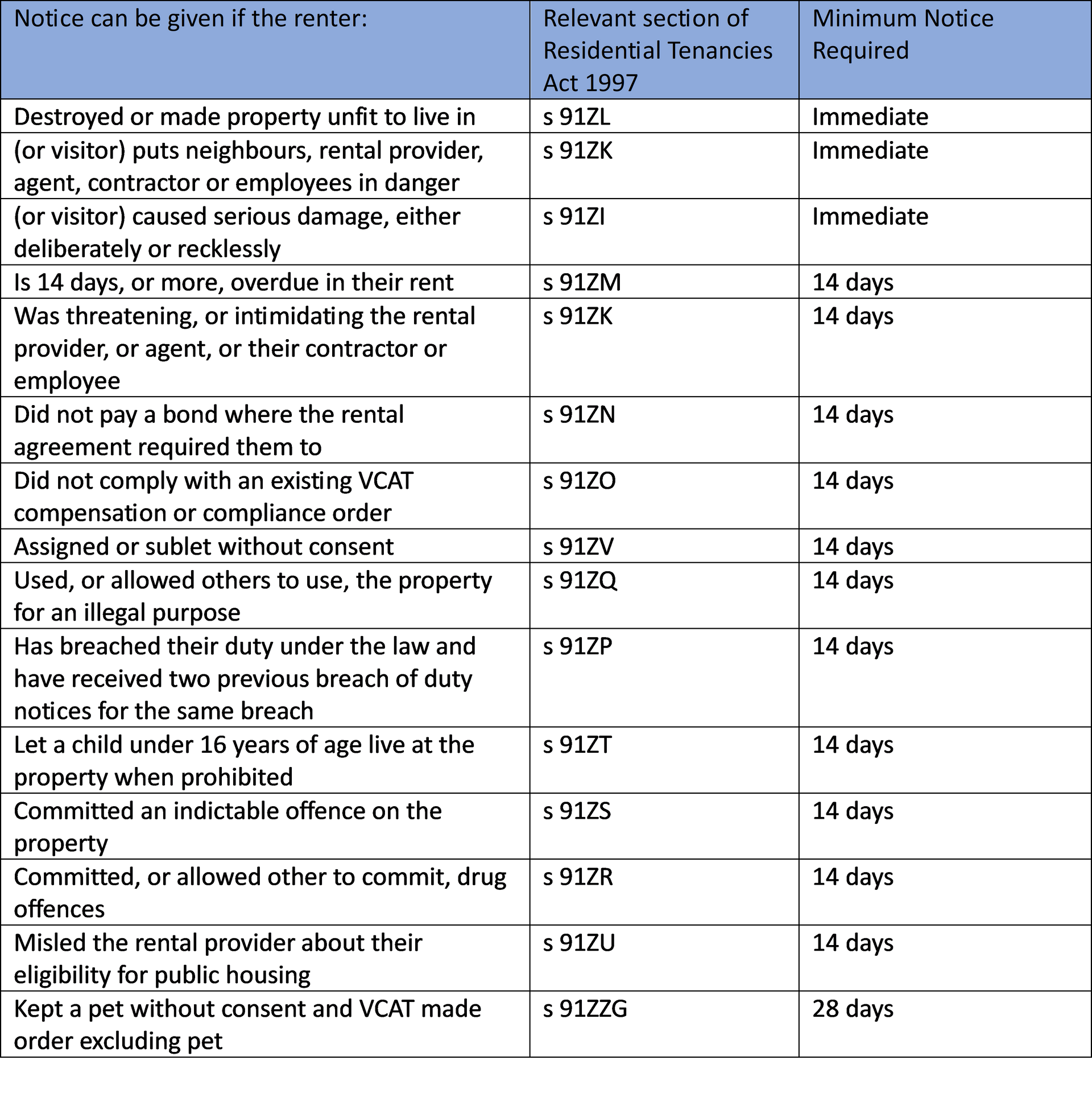
Key changes made by the new rental laws include threats and intimidation by the renter as a ground for issuing a 14-day notice to vacate. Additionally, a notice to vacate for causing serious damage to the property no longer requires malicious intent by the renter but can now also be issued if the damage was caused recklessly.
It should be noted that under the Amendment Act, a rental provider cannot unreasonably refuse a request to keep a pet. If a rental provider wishes to refuse such request, , they must apply to VCAT for an order excluding the pet. Such order is only granted if it is reasonable, considering any factors VCAT sees relevant, including the type of pet and property, any relevant laws and the appliances, fixtures and fitting at the property. A notice to vacate can only be given for keeping pets without consent if a VCAT order excludes the pet.
Notice at the End of an Agreement
To have a renter move out of a property when the rental agreement ends, the rental provider is still required to give a reason and comply with the notice period. These include:
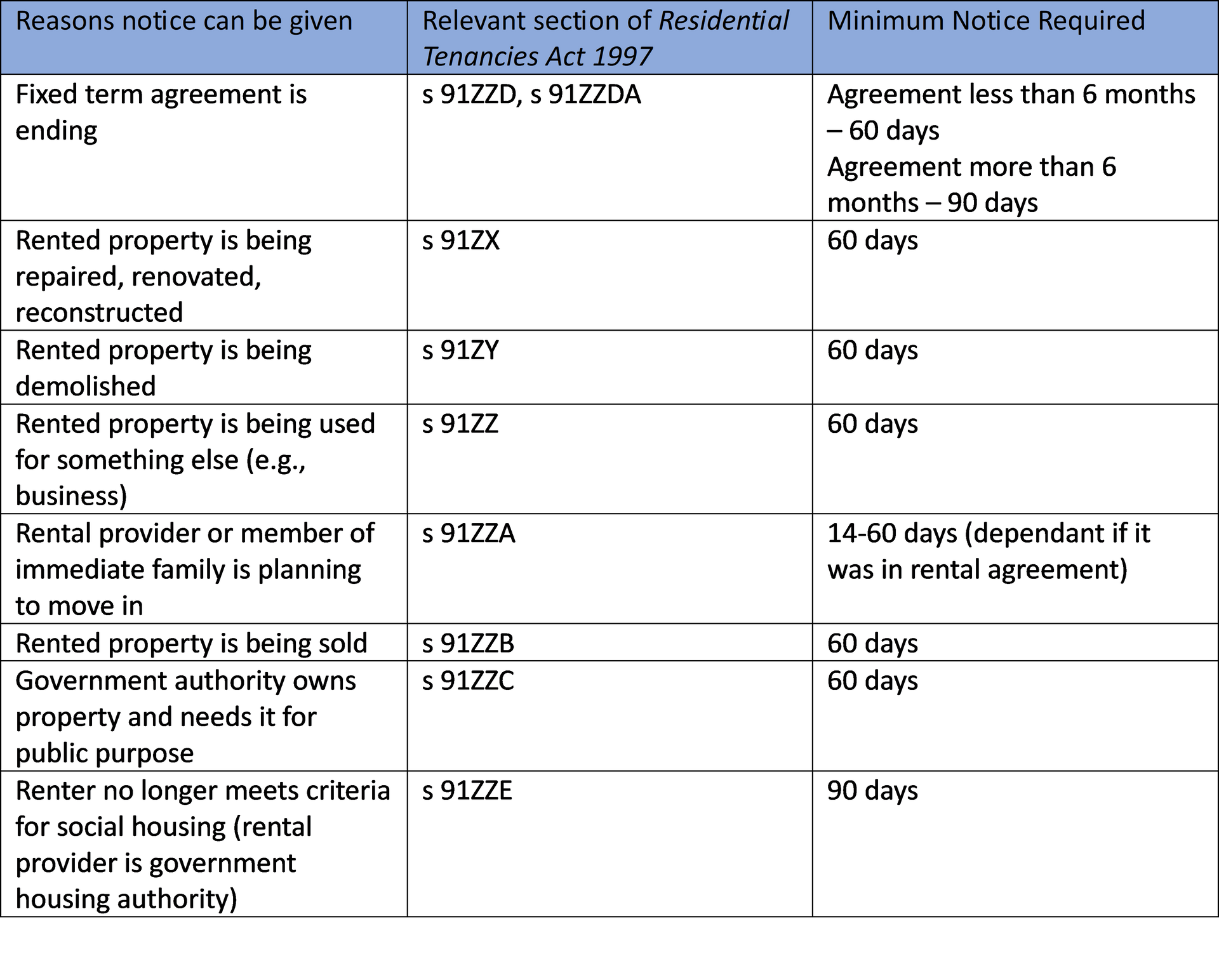
The Amendment Act now makes it necessary for rental providers to attach documentary evidence to a notice for all reasons that require 60 days of notice, except for the expiration of a lease agreement. The Director of Consumer Affairs Victoria will specify the types of evidence that must be used, for example a building permit.
Delivering a Notice to Vacate
The notice must (s 91ZZO RTA):
- be addressed to the renter;
- give the reason the rental provider is ending the agreement;
- be signed by the rental provider (or their agent);
- be sent with enough time for it to reach the renter; and
- state the date the renter has to leave by (the termination date).
The notice to vacate must be delivered to the renter at the rented premises, either by:
- registered post;
- electronic communication (such as email), if the renter has given consent to receive notices and other documents this way; or
- hand (giving the notice personally to the renter).
Challenging a Notice to Vacate
A renter can challenge a notice to vacate if they (s 91ZZS):
- it was not given to them properly;
- disagree with the reason given on the notice; or
- were given the notice as a result of personal or family violence (s 91ZZU).
The new rental laws have added extensive provisions regarding eviction for reasons of personal and family violence, and a notice to vacate is now challengeable on these grounds.
Possession Order
Once the notice to vacate is provided, the notice period must expire before the provider takes any further action. If the renter does not vacate the property voluntarily, the provider can apply to VCAT for a possession order. VCAT will review the case and determine whether the eviction is justified.
The changes in legislation now require that VCAT must not issue a possession order without first considering whether it is reasonable and proportionate in the circumstances, in light of (s 330A):
- how often the conduct leading to the eviction notice has occurred;
- whether the conduct is a breach of the rental or site agreement;
- how serious the conduct is;
- whether the conduct was caused by a person other than the renter;
- if family violence was involved;
- if the conduct can be (or has already been) resolved;
- the effect of the renters conduct on others;
- the behaviour of the rental provider and/or their agent; and
- whether there are any alternatives to making the possession order.
VCAT will consider the effect on everyone involved including the renter, rental provider, neighbours, and others (s 330).
Following such considerations, VCAT may decide to:
- grant the possession order, telling the renter to leave;
- dismiss the application, allowing the renter to stay; or
- dismiss the application and instead make a compliance order, instructing the renter to remedy the cause of the possession order or refrain from such conduct.
Warrant of Possession and Eviction
If a possession order is granted, the renter will be given a specific date by which they must vacate the property. If they do not leave voluntarily, the provider has up to 6 months to apply for a warrant of possession from the Magistrates' Court. Unless the warrant is validly postponed by VCAT for reasons of hardship, this will allow the police to physically remove the renter from the property.
It is important to emphasise that a rental provider cannot lock out the renter or personally carry out an eviction. Only the police when acting on a warrant of possession can legally evict renters.
If you are a rental provider looking to terminate an agreement or a renter wishing to challenge a notice, reach out to a member of our Team on 1300 892 237 or by sending an email to [email protected].
Contact Us
We’re an Australian Law Firm promoting a nuanced, personal touch. We have the skills you need to resolve your case quickly and with a positive outcome. Our straight talking team stays close to simplify what is most often a complicated process. We help individuals and businesses with technology and startup law, property law including conveyancing and leasing, commercial law, civil litigation, wills, estates, bankruptcy, insolvency, criminal law, and professionals facing investigations and charges from their regulatory body.
We have a connected network of talented lawyers in Melbourne CBD, Dandenong, Ballarat, and Ivanhoe East.
Fill out the form or call us on 1300 892 237.
We will get back to you as soon as possible
Oops, there was an error sending your message.
Please try again later or call us on 1300 892 237.




